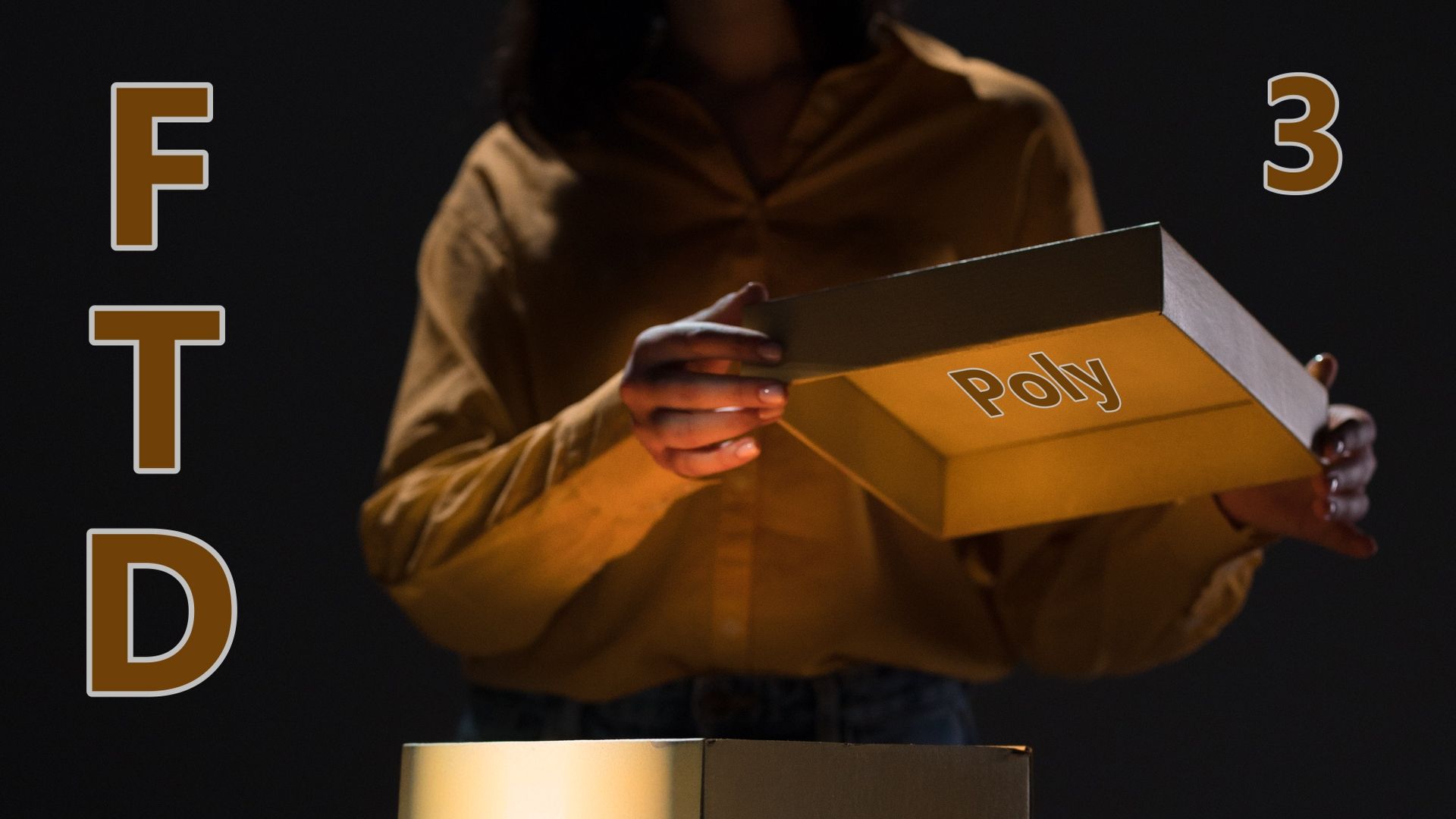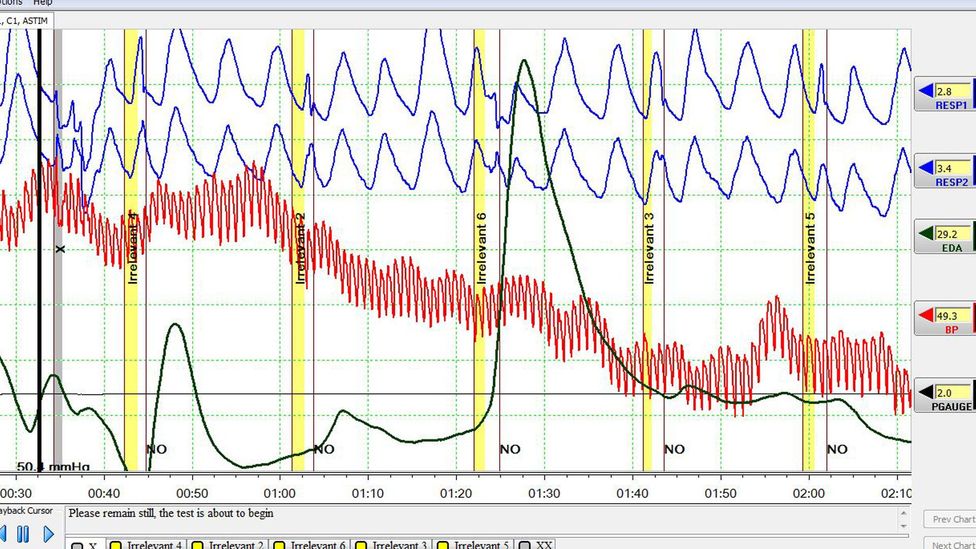Polygraph Exams In Formal Therapeutic Disclosure
Oct 03, 2023
Heart rate, blood pressure, respiration, perspiration and skin conductivity.
These are the autonomic (involuntary) body functions measured during an exam. They are plotted on a chart called a polygraph... poly meaning many & graph meaning writing.
Here's an example of a polygraph chart:

Interpretation
The term "lie-detector test" is a misnomer. A polygraph machine cannot determine if a person is lying or telling the truth... it simply charts body activity while an examiner asks questions.
The examiner is trained to interpret the data to indicate a response that was truthful, deceptive or inconclusive. To accomplish this, they must establish a person's baseline reactions to non-relevant questions and compare their momentary reactions to relevant questions. Doing so well requires immense training, skill and experience.
Because conclusions are rendered based on comparison and interpretation, attempts to "beat a polygraph" are really efforts to modulate bodily reactions in order to disrupt an examiner's ability to compare and interpret the data.
According to a BBC article, defeating a polygraph against novice students is possible, but defeating an experienced examiner is harder. Goodson, who is an experienced examiner himself, had this to say,
“Altering human physiology is not difficult, and there are many anti-polygraph websites that teach this. What these websites can’t teach is how to alter one’s physiology that appears to a polygraph examiner as a genuine or natural response to a polygraph exam question. When polygraph examinees try to alter or control their bodies’ normal reactions, it creates abnormal data that is easily recognizable by a polygraph examiner trained to detect these unnatural physiological responses.”
Complications
Sometimes, distracting thoughts trigger bodily reactions that appear deceptive on the chart, even though the examinee responded truthfully. A skilled examiner uses follow-up questions to clear the confounding issues and run the test again.
This happened to a former client when he feared his wife disbelieving his test results. His body reacted and the polygraph recorded data that could have been interpreted as deceptive. The examiner processed with him what happened and why. When they ran the test again, he answered identically and had zero body reaction.
Remember, neither a polygraph machine nor examiner are mind-readers. The machine simply records that a person is reacting. The professional relies on training and experience to figure out why and clear confounding issues.
An examiner I know says it this way,
"Any monkey can run a polygraph machine, it takes a good interviewer to get quality results."
Validity
Scientists have expressed doubt about the validity of polygraph exams. They argue that a physiological response is not necessarily linked to lying. This was exactly the experience of my former client in the last section.
Even the American Polygraph Association has conducted research into the validity of the comparison question technique. What they discovered in a 2011 meta-analysis was that this method had incorrect outcomes about 15% of the time.
This would explain why many courts view polygraph evidence as non-admissible. Because their use case is potentially criminal in nature, a much smaller margin of error is naturally required.
In comparison, polygraphs that are used for non-criminal cases tend to yield significantly higher validity.
This is great news for couples on the recovery journey!
For Marriage
As part of Formal Therapeutic Disclosure, couples have the option to use a polygraph exam to verify the accuracy and completeness of the disclosure.
If there has been a pattern of deception, a polygraph exam may be the only hope of revealing the truth and rebuilding trust. This path minimizes risk of future disclosures.
If deception has been minimal, a betrayed spouses may choose to forgo an exam. This path requires significant faith in the unfaithful spouse and carries a high risk of an incomplete disclosure, which would lead to additional betrayal later.
Ultimately, the choice lies with the betrayed spouse.
For the addict/unfaithful spouse, the therapeutic benefits of FTD depend mostly on the degree to which they disclose their entire sexual history. It is the very act of facing and processing the darkest, most shame-filled aspects of a person's story that allows them to heal, experience freedom and develop empathy for their hurting spouse.
Therefore, some cases turned out well without using a polygraph exam, a much higher percentage of cases achieved marriage recovery precisely because they used a polygraph exam to force everything into the light.
In addition, because the use case is non-criminal and test takers are typically full bough into the process for their own healing, the validity of polygraph exams for therapeutic benefit is closer to 99%.
More Complications
Addicts and unfaithful spouses often tell me that passing their polygraph exam was a huge sense of relief and affirmation that they are on a new path of health.
Even so, there is no guarantee that their spouse will accept the results.
Sometimes, years of deception, gas-lighting and betrayal cause such a psychological damage that believing the verified truth may be difficult.
This is common among cases with a history of gas-lighting, staggered disclosure and other forms of manipulation. Understandably, releasing old narratives about one's spouse can be hard, especially when they've been true for years.
I've witnessed marriages fall apart specifically because the betrayed spouse was so convinced of something that not even a polygraph exam, conducted twice, could convince them otherwise.
Summary
Polygraph machines measure the body. An examiner interprets the data. Neither are mind-readers and the process is not infallible. The more experienced the examiner, the higher the reliability.
Betrayed spouses can require or forgo a polygraph exam to validate the completeness of a disclosure. Including it minimizes the risk of future disclosures and additional betrayal, while also maximizing the therapeutic benefit for the unfaithful spouse.
When there is a pattern of deception and manipulation, a polygraph exam may be the only hope for rebuilding trust and healing the relationship. Even so, a betrayed spouse maintains the right to believe or discredit the results.
Learn more about the FTD process and how it changed
one man's life, marriage, and relationship with God.
WATCH "Disclosure Done Right"
RELATED:
- Part 1: What is Formal Therapeutic Disclosure?
- Part 2: When Is It Best To Do Formal Therapeutic Disclosure?

Stay connected with news and updates!
Receive emails about new posts, free webinars, trainings and live events.
We hate SPAM. We will never sell your information, for any reason.

